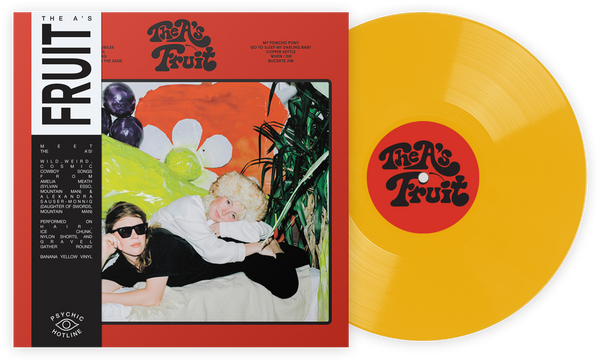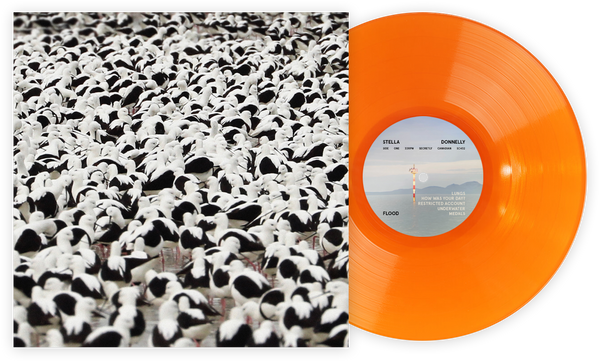Yard Sale adalah toko rekaman terbaik di Michigan
50 Toko Rekaman Terbaik di Amerika adalah seri esai di mana kami mencoba menemukan toko rekaman terbaik di setiap negara bagian. Ini bukan toko rekaman yang selalu memiliki harga terbaik atau pilihan terbanyak; Anda dapat menggunakan Yelp untuk itu. Setiap toko rekaman yang ditampilkan memiliki cerita yang melampaui apa yang ada di raknya; toko-toko ini memiliki sejarah, membina rasa komunitas, dan berarti sesuatu bagi orang-orang yang mengunjunginya.
Sometime in 1841, Douglass Houghton, hired as the first state geologist of Michigan after the state was accepted into the union in 1837, made his way up the hills in the middle of what is now called the Keweenaw Peninsula, and found what the state legislature hoped he would: riches. In the woods of upper Michigan, those riches were not gold, or even the more than plentiful—if hard to harvest—lumber. It was copper, which was used for money, dishes, pipes and whatever else you could fashion out of metal in those pre-Civil War days.
Houghton filed a report to the state legislature, more than a third of which was devoted to the copper deposits he found in the region. Unlike virtually every other copper mining region before and since, the copper in the Upper Peninsula was in the form of native copper, meaning that it was prevalent in its metallic form, instead of buried in other minerals. Houghton’s report set off the very first mining boom in American history, leading to a copper rush that brought thousands of Swedes, Finns (like my ancestors) and Norwegians to the region, as they could stand up to the annual 25 feet of snow better than other groups (to this day, the region gets more snow than any U.S. area east of the Mississippi).
In 1865, the Calumet Mining Company started a company town to work a series of mines in the region. They naturally called the town Calumet, and the population swelled to around 6,000 people, which, given the remote location and the harshness of the surrounding areas, was a huge amount of people, especially considering that the city of Houghton—officially named as such to honor Douglass Houghton, who died in the mid 1840s when his boat capsized in a chilly Lake Superior—had half the population, even though it had a university (Michigan Tech).
A 100 mile copper mining belt provided the region with an influx of cash, and allowed the mining bosses living in Calumet to build big mansions, and to build impressive brick buildings down a stretch of Hecla Street (including the building that concerns us here). In 1895, the Michigan state Legislature decided to change the name of Calumet to Laurium, to honor the ancient mining city of a similar name in Greece, and renamed a smaller city to the southwest, Red Jacket, Calumet. That same year, the most famous resident in the history of Laurium, Michigan, was born: George “The Gipper” Gipp, subject of the movie that gave president Ronald Reagan his nickname.

In 1907, the First National Bank of Laurium opened. It was, and remains, the most opulent looking building in Laurium. As always happens when a group of humans sets to digging stuff out of the ground, the copper started drying up. The last mine closed in the ’60s, with most of the mining jobs disappearing by the time Copper Country—the name of the region now, and forever—started sending its young men off to the World Wars. The population of Laurium—and the region in general—cratered, to the point where today it has under 2,000 residents.
In 1981, a Laurium local opened a shop across the street from the old bank building, which in the ’70s served as the location of the Keweenaw Printing Company. He called his store The Yard Sale, and he sold a variety of junk items; the name of the store was not meant to be clever. In the 1990s, the Yard Sale was doing well enough that he was able to expand his store to the empty bank building across the street. The empty bank building—complete with its cracked marble floors, it’s dusty walls and literal vault—became what is the best record store in Michigan, as the Yard Sale boasts over 20,000 records, collected from what you can only assume is every rummage, estate, garage and well, yard sale to happen in the region over the last 20 years.
The Yard Sale is unique not only for the history of its locale, but also for its hours—it’s only open six months of the year, as the other six it’s closed because it’s too snowy to safely travel to shop there—and for the weird breadth of its collection. I imagine it is the only record store outside of Helsinki to boast a robust “Finnish Language” section, and knowing what I know from my great aunts and uncles up there, the insane depth of the Liberace selections is due to his fame amongst the record buyers of the region.
And that’s what sets the Yard Sale apart from any comparable store down state in the Land of the Trolls (Yoopers call people who live below the Sault Ste. Marie Bridge Trolls). It’s the only store I’ve ever found that feels like crate digging through the record collecting history of an entire region. You can pore through boxes of ’40s classical music, and ’50s bossa nova, the premiere dinner party music of the era. You can follow rock history from the Beach Boys—the U.P. actually has some wild beaches, including some that have waves big enough you could surf—to the Clash, though punk rock never made much of a dent on the U.P., so there’s not tons of it. Hair metal was a popular genre, and so was country, so both genres are plentifully stocked.
I first went to the Yard Sale in 2011, when I was vacationing with my family. My mom is from Chassell, Michigan, an even smaller city 20 miles south of Laurium on Highway 41, so my folks go there every summer. My dad was working on some home improvement project, and in his pre-travel Googling—the internet didn’t get good up there till about 2014—he saw that there was a second hand store in Laurium, a city we only stopped in for its pasties. He came back to our cabin in Chassell and said “You need to go to the Yard Sale. They have more records than any place I’ve ever seen.”
And nothing prepares you for the experience of crate digging through that many records. I bought something like 30 records that first year, and have probably bought 120 records total from the Yard Sale. And my pickups from there run the gamut from Willie Nelson and Philip Glass, to Motley Crue and a compilation of Finnish folk songs. It’s an annual record hunting trip I look forward to every year.
If you’re traveling from elsewhere to the Yard Sale, you’re not going to have much luck if you’re looking for flawless copies of the albums you’re digging through there; they don’t have plastic sleeves, and the climate is rough on the records. But that’s not the point; you’re not there to find pristine copies of Sorcerer or that Beatles album with the meat on the cover or whatever. It doesn’t pretend to be anything it’s not; just a dilapidated bank building with more than 20,000 records priced between $2 and $7. And there’s something so charming about that to me; it’s a record store steeped in history, in a crazy location, just trying to get old records into the hands of people that want them.
Andrew Winistorfer is Senior Director of Music and Editorial at Vinyl Me, Please, and a writer and editor of their books, 100 Albums You Need in Your Collection and The Best Record Stores in the United States. He’s written Listening Notes for more than 30 VMP releases, co-produced multiple VMP Anthologies, and executive produced the VMP Anthologies The Story of Vanguard, The Story of Willie Nelson, Miles Davis: The Electric Years and The Story of Waylon Jennings. He lives in Saint Paul, Minnesota.












